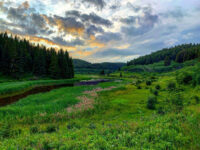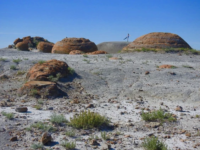Putting Lethbridge on the map
By Submitted Article on June 24, 2020.
Andrew Chernevych
GALT MUSEUM AND ARCHIVES
By 1920, the automobile was no longer a technological novelty – instead it was quickly turning into a new and exciting culture. Appropriate driving regulations, service, etiquette and dress became defined. The new transportation changed the way people thought about travel, leisure and even geography. Early motorists were enthralled with long-range travel, on their own terms.
Long-range motoring was looming as an economic opportunity and the local business community was paying attention. “Lethbridge may welcome two large parties of motor tourists this summer, the most important one, in the opinions of several business men, is the party coming from Washington, Idaho and other states, who will approach the city through Fernie and the Crow’s Nest Pass,” announced the Lethbridge Herald on April 3, 1920.
There was one problem that hindered the potential growth of this activity: the roads. Many of them were still poor dirt roads, not even properly graded and gravelled, which made them slow, uncomfortable and taxing on automobiles. They were even functionally unusable for part of the year. The Good Roads and Motor Traffic Association was created to change this. Besides lobbying for better roads, the association acted to promote tourism: they partnered with local boards of trades, assisted incoming motor parties and boosted local attractions.
The crowning achievement of the era for automobile travellers was the completion of the road connecting the Grand Canyon in Arizona to Banff, Canada. The route was promoted as the “collection of scenic wonders unrivalled in the world” and motoring was the only way to experience the attractions in the absence of a north-south railway. The Good Roads Association fought to make sure that Lethbridge was part of the main route (not the alternate route as it was originally planned). They successfully argued that the Cardston-Lethbridge route offered attractive scenery, including the “the highest and longest bridge in the world” in Lethbridge, more services, better roads and that it was overall more sustainable.
And this is how Lethbridge was put on the map! You can find out more about the history of Lethbridge and southern Alberta at http://www.galtmuseum.com.
Your old photos, documents, and artifacts might have historical value. Please contact Galt Museum & Archives for advice before destroying them.
10-9




